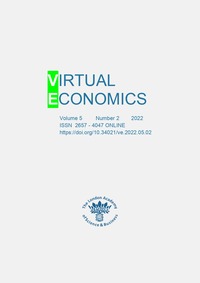Investment in Virtual Digital Assets Vis-A-Vis Equity Stock and Commodity: A Post-Covid Volatility Analysis
Investment in Virtual Digital Assets Vis-A-Vis Equity Stock and Commodity: A Post-Covid Volatility Analysis
Author(s): Nishi Sharma, Shailika Rawat, Arshdeep KaurSubject(s): Financial Markets, ICT Information and Communications Technologies
Published by: The London Academy of Science and Business
Keywords: autoregressive conditional heteroscedastic model; cryptocurrencies; decentralized financial assets; non-fungible tokens; risk-return analysis;
Summary/Abstract: Virtual digital assets including cryptocurrencies, non-fungible tokens and decentralized financial asset have been initially used as an alternative currency but are currently being purchased as an asset and hedging instruments. Exponentially growing trading volume witnesses the growing inclination of investors towards these assets, and this calls for volatility analysis of these assets. In this reference, the present study assessed and compared the volatility of returns from investment in virtual digital assets, equity and commodity market. Daily closing prices of selected cryptocurrencies, non-fungible tokens and decentralized financial assets, stock indices and commodities have been analysed for the postcovid period. Since returns were observed to be heteroscedastic, autoregressive conditional heteroscedastic models have been used to assess the volatility. The results indicate a low correlation of commodity investment with all other investment opportunities. Also, Tether and Dai have been observed to be negatively correlated with stock market. This indicates the possibility of minimizing risk through portfolio diversification. In terms of average returns, virtual digital assets are discerned to be better options than equity stock or commodity yet the variance scenario of these investment avenues is not very rosy. The volatility parameters reveal that unlike commodity market, virtual digital assets have got a significant impact of external shocks in the short-run. Further, the long run persistency of shocks is observed to be higher for the UK stock market, followed by Ethereum, Tether and Dai. The present analysis is crucial as the decision about its acceptance as legal tender money is still sub-judice in some countries. The results are expected to provide insight to regulatory bodies about these assets.
Journal: Virtual Economics
- Issue Year: 5/2022
- Issue No: 2
- Page Range: 95-113
- Page Count: 19
- Language: English

